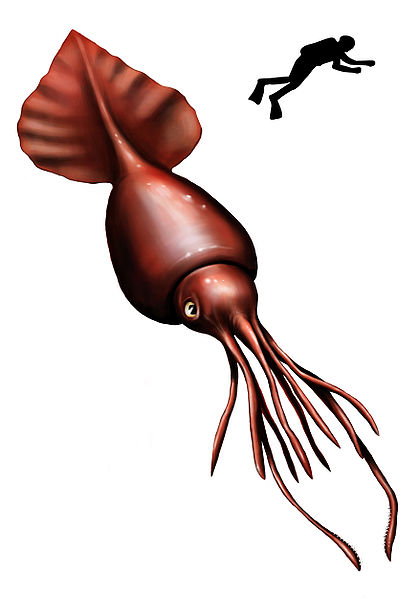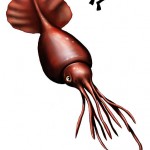A recent discovery of a large eye found by a beachcomber in Florida initiated a flurry of internet speculation of its mysterious owner. The contenders for ownership included colossal squid, thresher sharks and a range of mysterious sea creatures both real and imagined.
While the owner of the tennis ball sized eye has recently been attributed to a swordfish, it is perhaps not unreasonable to attribute such a large eye to creatures of monstrous sizes, especially considering the eye rivals the size of those of the largest animals to every exist, the cetaceans.
So why don’t we always find the largest eyes in the largest creatures? Moreover, why are the largest eyes found in such an unusual and evolutionarily distant set of creatures including colossal squid, the extinct ichthyosaurs and to a lesser extent swordfish?
One study recently published in Current Biology has tried to address this mystery by looking at the football sized eyes of the Colossal squid. The eyes of Giant and Colossal squid are the largest of any extant animal with an eye diameter up to three times larger then the next largest eyes, that of swordfish and whales, hence dwarfing the eye found on the beach.
Nilsson et al used model simulation comparing the benefits arising from increasing eye size in relation to spotting point light sources, dark objects against a light background (diurnal vision) and luminescent objects against dark background. They found that in bright-lit areas the benefits arising from larger eyes diminish greatly meaning that whale eyes size represents the limit in terms of visual ability in these environments. However in cases where large luminous objects are against a dark background, extremely large eyes become beneficial again.
Such scenarios of bright objects against a dark background are found in the deepest parts of the oceans where various bioluminescent organisms live. Movement through such waters can disturb such organisms, in particular bacteria, which cause them to create a glowing silhouette of the animal. This is where the advantage arise for the squids large eyes as they can detect the disturbance of its main predator the sperm whale from over 120 meters away, allowing it to take evasive action.
This technique only seems to be advantageous for spotting large predators, which explains why colossal squid and also perhaps why ichthyosaurs had such large eyes, with large pliosaurs their potential predator.
Author
Kevin Healy: healyke@tcd.ie
Photocredit
wikimedia commons


